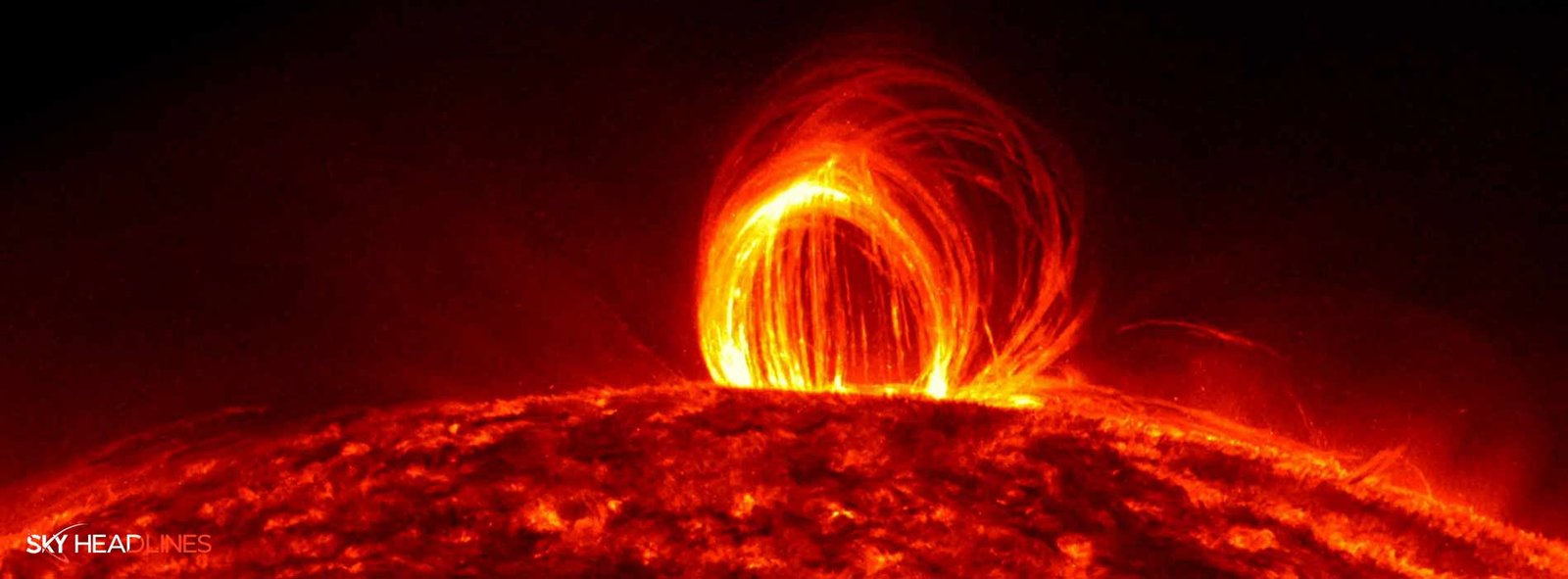What are solar flares and coronal mass ejections (CME) and how do they affect Earth’s magnetic field?
Solar flares and CMEs (coronal mass ejections) are powerful events that happen in the solar system. They send a lot of energy toward Earth’s magnetic field in the form of plasma gas. This can cause problems for power grids, satellites, and communication networks. Scientists have been trying to figure out how particles get accelerated during big solar energetic events. It’s a big question in the field of heliophysics.
Dr. Gang Li:
A professor named Dr. Gang Li from The University of Alabama in Huntsville wrote a paper called “Modeling Solar Energetic Neutral Atoms from Solar Flares and CME-driven Shocks”. This paper explains how we can use energetic neutral atoms (ENAs) to learn about how solar flares and CME-driven shocks accelerate particles. This is the first time anyone has shown how ENAs can be used to differentiate between the two acceleration sites.
How solar ENA particles are created and spread?
Dr. Li thinks that this work will make the heliophysics community more interested in studying how solar ENA particles are created and spread. This paper shows that ENAs can help tell the difference between CME/Flare SEP acceleration. This is important because it could help us measure solar ENAs in the future.
Dr. Gary Zank:
According to Dr. Gary Zank, who is the director of UAH’s Center for Space Plasma and Aeronomic Research and the Aerojet Rocketdyne chair of the Department of Space Science, Dr. Li’s work is a new and innovative way to study how particles are accelerated in the sun’s atmosphere from a distance.
What are ENAs and how are they used in space science?
The Department of Space Science is working hard to explore faraway parts of space using ENAs. These ENAs are made in the outer edges of the heliosphere and nearby interstellar space. By studying these ENAs, we can learn more about the plasma physics of these areas.
Dr. Li:
Dr. Li explains that ENAs are used to gather information about physics parameters at acceleration sites. Particles can be speeded up in two places: solar flares or CME-driven shock. Scientists have found this out. Which site is better at speeding up particles? What site can make particles go faster? People often argue about these questions, but we don’t have a definite answer.
Why the sun is the biggest challenge in understanding the physical processes involved in producing SEP events?
The sun is the biggest challenge in solving these mysteries through experiments because we can’t directly measure the conditions near the acceleration sites. This makes it difficult to understand the physical processes involved in producing SEP events.
How could ENAs provide answers to these mysteries?
ENAs could be a new way to provide answers. They are made from hydrogen atoms and come from reactions where protons change. They are neutral particles. Neutral objects are not influenced by magnetic fields.
Why are neutral particles important in studying the sun’s activity?
Dr. Li explains that neutral particles are important because they are not affected by the solar wind MHD turbulence as they travel from the sun to observers. Protons, ions, and electrons are charged particles that travel from the sun to Earth. However, their journey is affected by the magnetic field of the solar wind, which causes them to be distorted. ENAs contain all the physics information from where they were accelerated. Watching them gives us a chance to better understand how particles are accelerated.
What are energetic atoms and how are they measured?
Energetic atoms can share their secrets from a distance of 150 million kilometers away from the sun. This is called 1 astronomical unit. At this distance, a special detector can still measure the ENAs. NASA may launch a new solar mission to learn more about the particles that cause large space weather events and how they affect Earth’s magnetic field. This mission could be a result of efforts to collect more data on the topic.
How can simulations help us understand future ENA observations?
Dr. Li says that our simulation can help us understand future ENA observations. NASA is probably considering studying solar ENA in the future, and they might do this through a mission like the NASA SMEX mission. By focusing on ENA measurements and filtering out charged SEPs, a special mission could give us new insights into how SEPs are accelerated near the sun. This could help us answer some of the questions that have puzzled scientists for a long time.
Dr. Zank:
Dr. Zank is part of a new NASA mission called IMAP. They will use ENA instruments at 1 astronomical unit to measure ENAs created in the far reaches of the heliosphere and from the sun.





